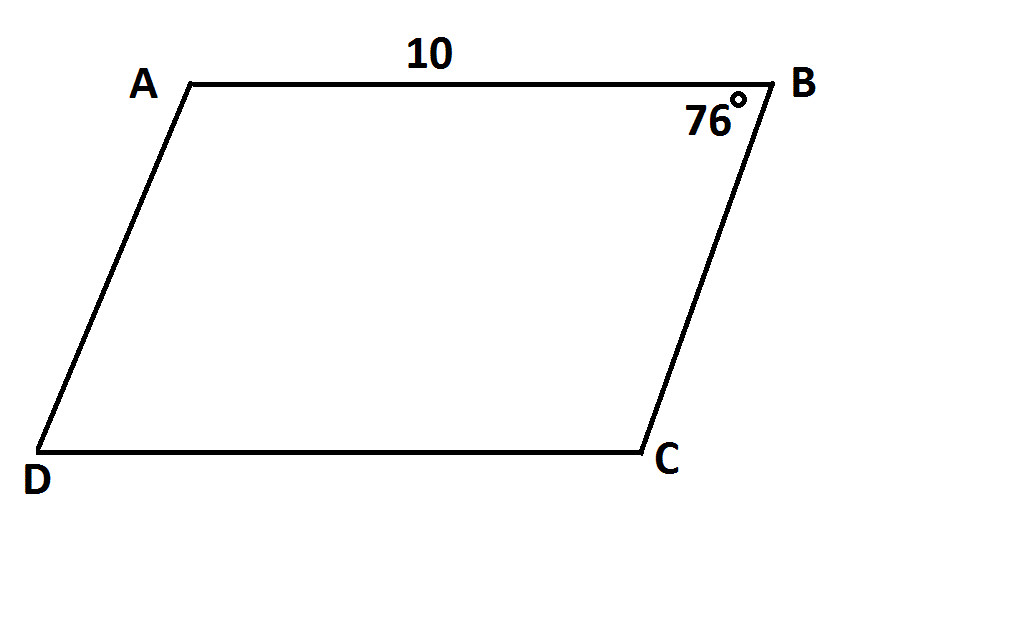Calculating an angle in a quadrilateral
Help Questions
GMAT Quantitative › Calculating an angle in a quadrilateral
Two angles of a parallelogram measure 


Explanation
Case 1: The two angles are opposite angles of the parallelogram. In this case, they are congruent, and
Case 2: The two angles are consecutive angles of the parallelogram. In this case, they are supplementary, and

Note: Figure NOT drawn to scale.
The above figure is of a rhombus and one of its diagonals. What is 
Not enough information is given to answer the question.
Explanation
The four sides of a rhombus are congruent, so a diagonal of the rhombus cuts it into two isosceles triangles. The two angles adjacent to the diagonal are congruent, so the third angle, the one marked, measures:

Note: Diagram is NOT drawn to scale.
Refer to the above diagram.
Any of the following facts alone would be enough to prove that 
Any one of these facts alone would prove that 
Explanation
Opposite sides of a parallelogram are congruent; if 

Consecutive angles of a parallelogram are supplementary; if 

Opposite angles of a parallelogram are congruent; if 

Adjacent sides of a parallelogram, however, may or may not be congruent, so the condition that 
Rhombus 


What is 
Explanation
The diagonals of a rhombus always intersect at right angles, so 
Which of the following can not be the measures of the four interior angles of a quadrilateral?
All four of the other choices fit the conditions.
Explanation
The four interior angles of a quadrilateral measure a total of 
This last group does not have the correct sum, so it is the correct choice.
A circle can be circumscribed about each of the following figures except:
A rhombus with a 
An isosceles triangle with its base one-half as long as either leg
A right scalene triangle
A rectangle twice as long as it is wide
An isosceles trapezoid with one base three times as long as the other
Explanation
A circle can be circumscribed about any triangle regardless of its sidelengths or angle measures, so we can eliminate the two triangle choices.
A circle can be circumscribed about a quadrilateral if and only if both pairs of its opposite angles are supplementary. An isosceles trapezoid has this characteristic; this can be proved by the fact that base angles are congruent, and by the Same-Side Interior Angles Statement. For a parallelogram to have this characteristic, since opposite angles are congruent also, all angles must measure 
Quadrilateral 




Explanation
Two opposite angles of a quadrilateral inscribed inside a circle are supplementary, so

Refer to the above figure. You are given that Polygon 
Which of the following statements is not enough to prove that Polygon 


Explanation
To prove that Polygon 
If 

If 



If 


If 



However, since, by definition of a parallelogram, 















































